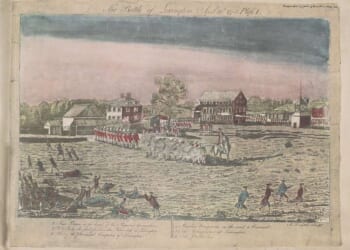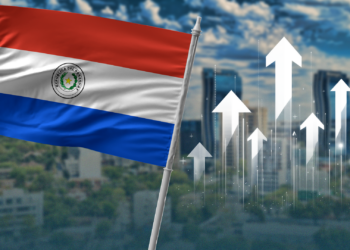As church bells clang, worshippers fill the sanctuary of San Lorenzo. Some squeeze up against the walls; others flow onto the front steps on the streets of Lavapiés, a gentrifying Madrid neighborhood.
When the priest appears, the throng parts just enough for him to pass. He touches the shoulders of those who turn to greet him – young and old, downtrodden and better-off – on his way to the altar.
The buoyant scene is not proof of a revival of Catholicism among increasingly secular Spaniards. These congregants come almost exclusively from Latin America, many having arrived recently from places such as Ecuador, Peru, and Venezuela.
Why We Wrote This
A story focused on
The Catholic Church in Spain is at the forefront of the country’s immigration experience. Following Pope Francis’ lead, the church is advocating a more inclusive policy toward migrants, and Catholics born abroad are increasingly filling the pews.
Over centuries, Spanish missionaries brought Catholicism, often forcibly, to these places. Now, as church attendance falls across Western Europe and North America, migrants from more religious cultures are bringing new life this aging institution.
Pope Francis, who died Monday and was the son of immigrants himself, advocated tirelessly for the dignity and inclusion of migrants, within and beyond the church. How parishes embrace this transformation, and attend to its tensions, will determine whether the church can model the integration he championed.
“They’re being enriched by a new presence, a much younger presence,” says Hosffman Ospino, a professor at the Clough School of Theology and Ministry at Boston College. Without these communities, “Many Catholic churches would simply close.”
“But still,” he adds, “Some people would say, ‘Can Latin America evangelize Europe? … Can Latin American movements renew Catholicism on the old continent?’”
Following Pope Francis’ lead
The San Lorenzo parish, dating to 1670, is said to stand on the site of a former synagogue. Today, it is known as one of Madrid’s most welcoming churches for immigrants. This Easter service is particularly jubilant, but parishioners say every Sunday is just as full.
Spain’s migrant population grew from 1.6 million in 2000 to 9.4 million this year. Two million arrived in the last three years, bringing foreign-born residents to nearly 1 in 5. Nearly half come from Latin America, home to the world’s largest Catholic population.
Though the Catholic Church does not publish data on the number of immigrants in its churches, many of those arriving from Latin America bring their faith and seek out religious community for connection and support.
This was true for Karla, who came from Honduras five years ago at 19 years old, looking for work to support her parents back home. Her mother worried she might stray in a country whose modern culture has diverged from its religious roots. According to a 2024 survey, four-fifths of the population does not practice any religion.
Karla, who only gave her first name because she lacks legal status, remembers praying, “Jesus, don’t let this separate me from you.”
San Lorenzo quickly became a second home and connected her to her first job. The church pairs job seekers with employers – in Karla’s case, an older Spanish couple seeking a live-in caretaker. Across Madrid, hundreds of immigrants queue for these church-organized job raffles.
The Catholic Church officially embraces migrants. This position strengthened under Francis, whose first papal trip was to Lampedusa, an Italian island and entry point for migrants. He established a Vatican department for migrants and refugees and criticized the Trump administration’s border policies.
As anti-immigration sentiment rises across Europe, many parishes have chosen to follow Francis’ lead. At San Lorenzo, Father Juan José Arbolí, who is Spanish, celebrates Catholicism’s diverse expressions. “When we celebrate the Virgin of Caacupé, which is from Paraguay, we all become Paraguayans,” says Karla.
Last year, Madrid’s archbishop, Cardinal José Cobo Cano, described this moment as one of “great opportunity: to show the world that integration is possible.”
Catholic groups have supported legislation to “regularize” half a million unauthorized migrants. The far-right party Vox, which positions itself as a defender of Catholic traditions and values, opposes this, arguing that Spain has a right “to continue being Spain.”
Yet supporting immigration does not always translate to integration.
Reshaping Catholic institutions
When Ismael Herrera began attending San Lorenzo in January, he acquired the nickname “the immigrant” from his new friends in the youth group.
He laughs about it, usually forgetting he’s the only Spaniard in a youth group of nearly 100. Mr. Herrera had attended other churches with more locals but never felt so welcomed until finding San Lorenzo.
“They are more open, more willing to include you,” he says.
With a Spanish father and Ecuadorian mother, Herrera navigates both worlds comfortably. But he doubts his fully Spanish Catholic friends would feel integrated at San Lorenzo. And conversations with priests from other parishes have alerted him to concern about it becoming known as a space that is primarily for immigrants.
“It is good, but also bad,” says Mr. Herrera. “There are only foreigners here, and in some other churches, there are no foreigners.”
He places some responsibility on priests, not all of whom are as inclusive as Father Juan. A priest from Navarre stirred controversy last fall for lamenting, during a sermon, the number of immigrants in many towns and the lack of Spanish nationals in pews.
Still, migration is not only preserving Catholic institutions; it is also reshaping them. As local interest in priesthood wanes, an estimated 1 in 10 priests in Spain are now foreign-born and will continue to become more influential within the church’s hierarchy.
As the San Lorenzo service closes, Ney Ortega mingles near vendors selling homemade Ecuadorian menudo stew to those leaving the church. He has tried Spanish Mass, but says, “I didn’t like it.” Latino Mass is more comfortable, he adds.
Every seat at every terrace in the trendy neighborhood has filled, most Spaniards celebrating Easter with tapas rather than with Mass. That doesn’t discourage Karla, who takes heart knowing she came to a “country of the Virgin Maria.”
“Like Pope Francis says, everyone, everyone is welcome,” she says.










